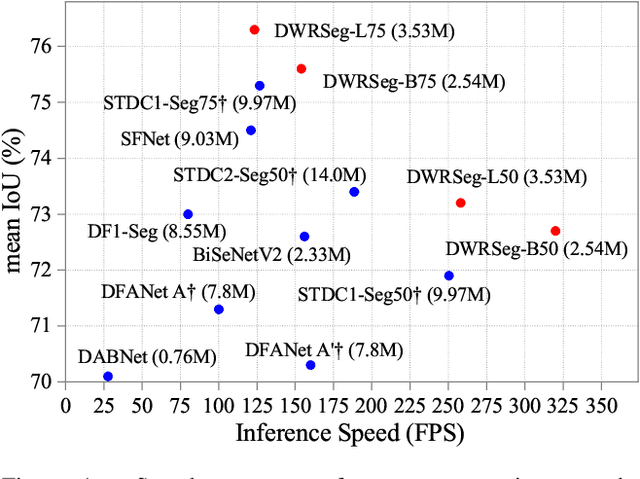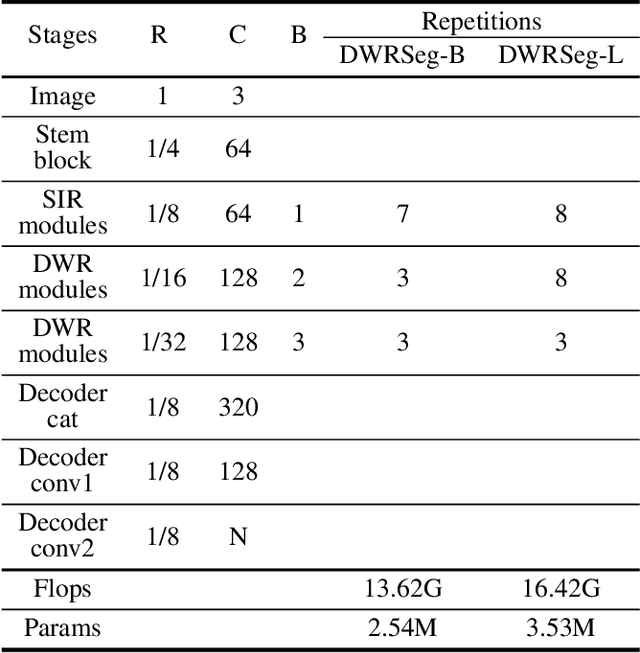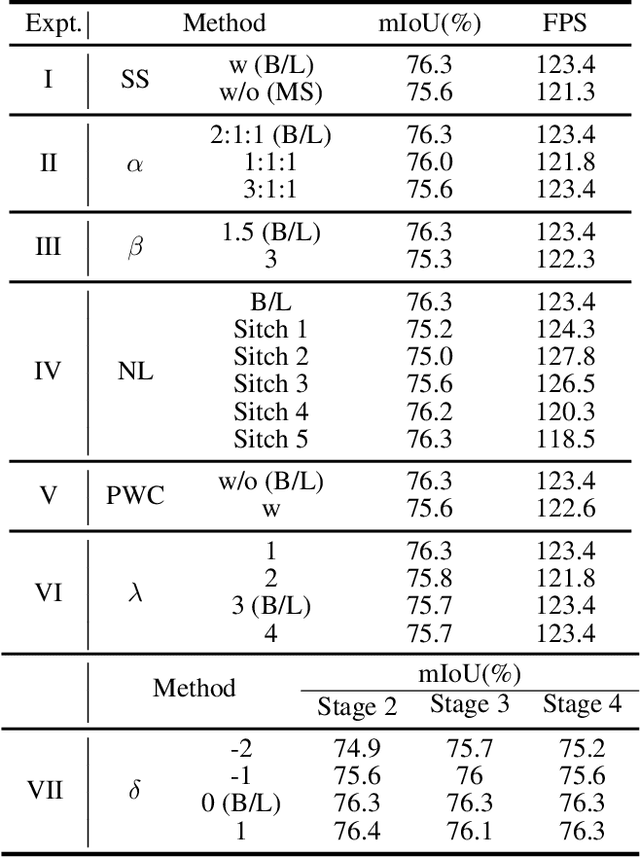Yaping Dai
DWRSeg: Dilation-wise Residual Network for Real-time Semantic Segmentation
Dec 02, 2022



Abstract:Real-time semantic segmentation has played an important role in intelligent vehicle scenarios. Recently, numerous networks have incorporated information from multi-size receptive fields to facilitate feature extraction in real-time semantic segmentation tasks. However, these methods preferentially adopt massive receptive fields to elicit more contextual information, which may result in inefficient feature extraction. We believe that the elaborated receptive fields are crucial, considering the demand for efficient feature extraction in real-time tasks. Therefore, we propose an effective and efficient architecture termed Dilation-wise Residual segmentation (DWRSeg), which possesses different sets of receptive field sizes within different stages. The architecture involves (i) a Dilation-wise Residual (DWR) module for extracting features based on different scales of receptive fields in the high level of the network; (ii) a Simple Inverted Residual (SIR) module that uses an inverted bottleneck structure to extract features from the low stage; and (iii) a simple fully convolutional network (FCN)-like decoder for aggregating multiscale feature maps to generate the prediction. Extensive experiments on the Cityscapes and CamVid datasets demonstrate the effectiveness of our method by achieving a state-of-the-art trade-off between accuracy and inference speed, in addition to being lighter weight. Without using pretraining or resorting to any training trick, we achieve 72.7% mIoU on the Cityscapes test set at a speed of 319.5 FPS on one NVIDIA GeForce GTX 1080 Ti card, which is significantly faster than existing methods. The code and trained models are publicly available.
Zero Cost Improvements for General Object Detection Network
Nov 16, 2020


Abstract:Modern object detection networks pursuit higher precision on general object detection datasets, at the same time the computation burden is also increasing along with the improvement of precision. Nevertheless, the inference time and precision are both critical to object detection system which needs to be real-time. It is necessary to research precision improvement without extra computation cost. In this work, two modules are proposed to improve detection precision with zero cost, which are focus on FPN and detection head improvement for general object detection networks. We employ the scale attention mechanism to efficiently fuse multi-level feature maps with less parameters, which is called SA-FPN module. Considering the correlation of classification head and regression head, we use sequential head to take the place of widely-used parallel head, which is called Seq-HEAD module. To evaluate the effectiveness, we apply the two modules to some modern state-of-art object detection networks, including anchor-based and anchor-free. Experiment results on coco dataset show that the networks with the two modules can surpass original networks by 1.1 AP and 0.8 AP with zero cost for anchor-based and anchor-free networks, respectively. Code will be available at https://git.io/JTFGl.
 Add to Chrome
Add to Chrome Add to Firefox
Add to Firefox Add to Edge
Add to Edge